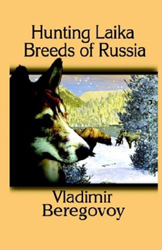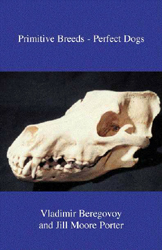Table of Contents
*
F.I.D.O.: Jan Erik and Barbro Engebretsen
*
First Camping Adventure with Greenland Dogs
*
The Breeding and Maintenance of Sledge Dogs, Part II
*
A Cut Above the Rest
*
In the News
*
Book Reviews:
Hunting Laika Breeds of Russia
Primitive Breeds - Perfect Dogs
*
IMHO: Waiting for Godot?
*
Index to Volume 6
Navigating This
Site
Index of articles by subject
Index
of back issues by volume number
Search The
Fan Hitch
Articles
to download and print
Ordering
Ken MacRury's Thesis
Our
comprehensive list of resources
Talk
to The
Fan Hitch
The Fan
Hitch home page
ISDI
home page
Editor's/Publisher's Statement
Editor: Sue Hamilton
Webmaster: Mark Hamilton
The Fan Hitch welcomes your letters, stories, comments and suggestions. The editorial staff reserves the right to edit submissions used for publication.
Contents of The Fan Hitch are protected by international copyright laws. No photo, drawing or text may be reproduced in any form without written consent. Webmasters please note: written consent is necessary before linking this site to yours! Please forward requests to Sue Hamilton, 55 Town Line Rd., Harwinton, Connecticut 06791, USA or mail@thefanhitch.org.
This site is dedicated to the Inuit Dog as well as related Inuit culture and traditions. It is also home to The Fan Hitch, Journal of the Inuit Sled Dog.
Hunting Laika Breeds of Russia
&
Primitive Breeds - Perfect
Dogs
by Vladimir Beregovoy
reviewed by Janice Dougherty
The publication of two important books somehow slipped my notice, but I would like to rectify that situation now. Hunting Laika Breeds of Russia and Primitive Breeds - Perfect Dogs, both written by Vladimir Beregovoy. The author is both a scientist and a serious dog person, with significant, practical, first hand experience of living and hunting with traditional people who depended on their dogs for their subsistence. A true cynologist, although he does not call himself one, the author merges two diverse yet complimentary areas of knowledge in his passion for primitive dogs.

In Hunting Laika Breeds of Russia Beregovoy addresses their origins (barking hunting spitz used on a variety of game), discusses four breeds in depth (Karelo-Finnish Laika, Russo-European Laika, West Siberian Laika and East Siberian Laika), their foundation stock, relationship, similarities, differences, hunting styles and how they interact with the people who use them. Their character - a topic often left out of typical breed encyclopedia entries or reference works - is thoroughly explained and put into perspective. There are in-depth details of physical and physiological characteristics and the changes that occur over time and with the interference of civilized society. Topics covered for each breed include life in country of origin, confinement, diet, interaction with people and animals, reproduction, attitude toward other dogs, domesticated and wild animals, and health. The author is keen on maintaining the correct selective perspective in keeping these breeds as authentic and functional workers. There are several black and while photos of the dogs in action. What I did not care for about this book were minor grammatical and spelling errors, less than optimal quality of photographs (which must be expected given the circumstances) and a slight change in font on one page, all faults of the publisher/editor.

Primitive Breeds - Perfect Dogs is a larger format publication, and includes all of the information of the Laika book plus much more. This book delves deeper into the domestication process, addresses wolf hybrids, and groups the primitive dogs into sub populations: (a) Australia, South-East Asia, Pacific Islands (b) India, China, Mongolia, Korea and Japan (Casey) Siberian Ural (d) Americas and Greenland (e) Europe (f) Middle East and Africa. Again, there is an emphasis on keeping dogs the natural way. Photos are better quality than in Hunting Laika Breeds of Russia, but still only black and white. There is an expansion on the discussion of genetics, selection, correct versus convenient temperament, diet, suitable owners and situations for these breeds. The author is keen on avoiding synthetic diets, plastic toys, pharmacological birth control and any influence that would stunt or weaken these breeds, individually or as a whole - including the wrong owner. What I did not like about this costly book was that it arrived direct from the publisher with a dent in its cover, apparently from being dropped or hit, a partially torn frontispiece, leaky glue spots, minor grammatical and spelling errors. It certainly did not get the fine combing that such an important book deserves. The author is quite frank, and does not pull any punches discussing the degenerating health of modern show dogs. Perhaps since the publisher's bread and butter is the dog show world, there was some sub-conscious agenda in disrespecting this book. With regard to the Inuit Sled Dog, the author refers to them officially as Canadian Eskimo Dogs, saying that the CKC recently recognized them. Actually, we well know that both the CKC and the AKC recognized the "Eskimo Dog" at around the same time as the Alaskan Malamute and Siberian Husky. AKC dropped the breed "for lack of interest" and CKC eventually gave nominal support to Carpenter et al in the mid 1970s to restore a viable population for kennel club purposes. The author lists MacRury's thesis as an information source, but then states that the CED/ISD is "a poor kennel dog and needs more personal contact with the master or just be closer to people" (p.224). In this book, Beregovoy lists a co-author who apparently has owned and or still owns Alaskan Malamutes, Siberian Huskies, Siberian Laika, and at one time an ISD whose blurred, out-of-focus picture as a puppy in a team (p.352), is the only photo of an ISD in the book, despite readily available sources. However, many photos of her other dogs do appear. The Alaskan Malamute entry states that "his character became somewhat more refined during his short history as a purebred." There is no mention of the insidious influence of crossing with non-Arctic breeds during the Gold Rush era, nor the lack of true working selection currently in the bulk of the gene pool. Also puzzling is inclusion of the Chinook in this entry. Whatever homeopathic whiff of the arctic remains in the Chinook is far beyond my nose to sniff out. That said, one should not overlook the beautiful forest for a few crooked trees. The references and bibliography of both books are as solid as they come, and should provide a pared down reading list for those with as serious an interest. Both books are highly recommended.
Hunting Laika Breeds of Russia, ISBN 1-59146-037-9; $15.00 USD plus shipping; paperback by Crystal Dreams Publishing in 2001, 166 pages, www.crystaldreamspub.com • Primitive Breeds - Perfect Dogs, ISBN 0-86667-065-3; $150.00 USD plus shipping; hardcover by Hoflin Publishing in 2001, 424 pages, www.hoflin.com.